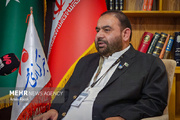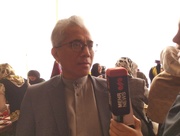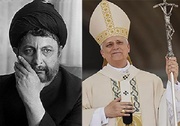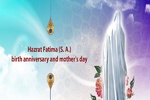Ali Moradkhani, the Deputy Culture Minister for Arts, on the sidelines of visiting two art exhibitions dubbed “From Soil to Heavenly Throne” and “Peace and Greetings” on Monday said the art department of the Ministry of Culture and Islamic Guidance is planning to inscribe the Persian Nasta'liq calligraphy script on the prestigious UNESCO Intangible Cultural Heritage list.
Nasta'liq, traditionally the predominant style in Persian calligraphy, was developed in Iran in the 8th and 9th centuries. It has extensively been (and still is) practiced in Iran, Pakistan and Afghanistan for written poetry and as a form of art. One prominent example of the highest elegance of using Nasta'liq can be found in Mir Emad's works, the most celebrated Persian calligrapher during the safavid era.
Moradkhani deemed the Persian Nastaliq script highly praised in international communities, saying “most people who work in the field of literature describe Nasta'liq as a script constantly in motion. This form of art has a special place in the international communities. I visited a museum in the US last year which showcased works belonging to Qajar era including various artworks done by Persian calligraphers and other artifacts in the museum evolved around this theme. This indicates people around the world are well acquainted with Iranian art.”
Intangible cultural heritage (ICH) is promoted by UNESCO as a counterpart to the World Heritage focusing mainly on intangible aspects of culture. Iran has already inscribed on UNESCO Intangible Cultural Heritage list Radif of Iranian music, Nowruz, carpet weaving, ritual dramatic arts of Ta’zieh, Zoorkhanei rituals, Naqqali, building Lenj boats, and Qalishuyan rituals (carpet washing ceremony) in Mashhad-e Ardahal.

























Your Comment